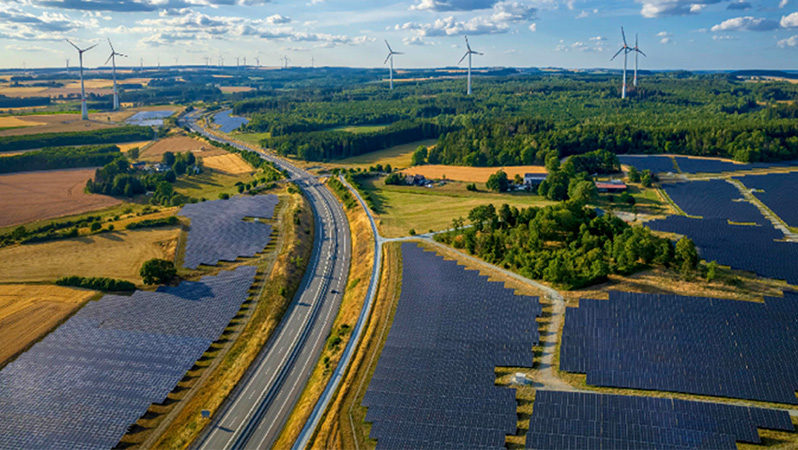The Need for Climate Innovation
Teacher Resources
Driving Question: What’s the role of innovation in addressing climate change?
We’ve made great progress but the current solutions we have aren’t enough to solve all our problems—we’re going to need even more innovation. Explore both the solutions we have and the innovations we need to reach our climate goals.
Learning Objectives:
- Identify existing climate solutions.
- Evaluate the role of innovation in reaching climate goals.
- Research and assess an innovative climate solution.
Vocab Terms:
- climate innovation
- decarbonize
- renewable energy
- research and development (R&D)
Opener: The Need for Climate Innovation
To teach this lesson step, refer to page 2 of Lesson 3.3 Teaching Guide.
What are the innovations needed to take on climate change? Looking to history might give us some clues.
Defining Innovation
To teach this lesson step, refer to page 2 of Lesson 3.3 Teaching Guide.
Our online teacher community is a great resource for suggestions on how to implement Climate Project in your classroom.
What exactly is innovation? Explore the different ways it can be applied to climate solutions.
Progress Report
Turn students into AI critics, not just users:
- Students research and write without AI, then prompt ChatGPT with the same questions they researched.
- Showdown: Students compare responses to analyze accuracy, bias, and reasoning quality, and then write improvement plans for responses.
Why this is genius: Students sharpen research skills, learn to evaluate AI critically, and often realize their human insight outshines the algorithm. Bonus: Nothing boosts confidence like catching an AI’s mistake!
We’ve made some real progress with our current climate solutions, but they aren’t enough to get us to net zero. Read the article to explore what innovations are still needed, and then use the activity to share your ideas for what’s most promising.
-
Guiding Questions
-
Before you read
Preview the questions below, and then skim the article. Be sure to look at the section headings and any images.
While you read
Look for answers to these questions:
- The IEA reports that we have the technology to account for about 65% of emissions reductions necessary to limit global warming to 1.5° Celsius. Why is that significant?
- What has driven the price reductions in renewable energy?
- What are two adaptation solutions that are in use and are lessening the impacts of climate change?
- What is climate innovation?
- What is one innovative strategy we’ll need to help protect populations most vulnerable to climate change?
- What’s an example of a new technology needed to reduce greenhouse gas emissions?
- What are two things that can be done to support the innovation we need to respond to climate change?
After you read
Respond to this question: What do you think is the most important thing we can do to drive innovation?
Climate Innovation
To teach this lesson step, refer to page 6 of Lesson 3.3 Teaching Guide.
What do Salt Lake City and batteries have in common? Watch the video to explore what might not be an obvious connection, and then investigate the role of climate innovation for yourself in the research activity.
-
Guiding Questions
-
Before you watch
Preview the questions below, and then review the transcript.
While you watch
Look for answers to these questions:
- Why do we need teams of people working together to solve the climate problem?
- What are two areas in which we need continued innovation to reduce greenhouse gas emissions?
- What are two groups of experts who can help create a denser Salt Lake City to limit the negative impacts of urban sprawl?
- Why is there a growing need for more-efficient batteries?
- What are the downsides of lithium-ion batteries?
- What are two fields of innovators that could help create better batteries?
After you watch
Respond to this question: What’s one field of climate innovation that you would be interested in learning more about? Why?
We need innovators from a wide range of backgrounds to solve the climate problem. Explore the different ways experts from many fields are working together to make climate solutions a reality, which will help you think about the different paths you could take to become a climate innovator.
Key Ideas
Closer: The Need for Climate Innovation
To teach this lesson step, refer to page 10 of Lesson 3.3 Teaching Guide.
Which solutions do you think are most important? You decide the winner in these matchups.







